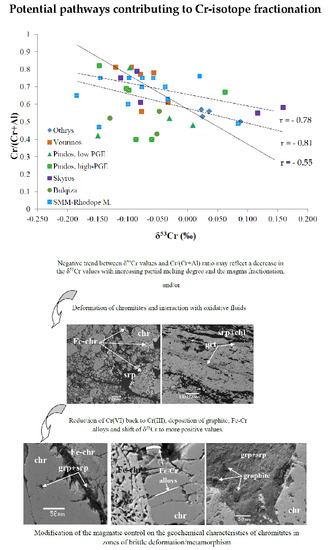
It is quite possible that the lack of studies of Eh on aerobic soils may account for an a priori underestimation of the impact that high levels of Eh can have on soil//plant/microorganism functioning and on plant health and production. 2001).ĭespite the paucity of redox potential (Eh) studies in agronomy, especially for aerobic soils, this essential parameter should not be overlooked because it is difficult to measure or interpret.

Consequently, Eh measurements are difficult to reproduce and interpret, and results from various authors are difficult to compare (Snakin et al. Three methodological reasons might explain this lack of references in the literature: (i) the high variability of Eh in space and time, especially when compared to pH variability (ii) the difficulties in measuring Eh in aerobic soils and (iii) the dependence of Eh and pH. The Eh of aerobic soils, which are the majority of cultivated soils, has received little attention in agronomy. 2010 Ponnamperuma 1965 1972 Stepniewski and Stepniewska 2009 Yoshida 1981). Most studies on soil Eh have remained limited to extreme situations leading to anaerobiosis, as in paddy fields and submerged soils (Bartlett and James 1993 De Mars and Wassen 1999 Gotoh and Yamashita 1966 Kludze and DeLaune 1999 Kogel-Knabner et al. Surprisingly, and in contrast to pH, Eh is much less central in agronomy. This is also the case in plant physiology (Rengel 2002). In soil science, for instance, despite the recognition of the importance of Eh, pH is often regarded as the master variable (Brady and Weil 2010 Simek and Cooper 2002). However, in many disciplines, oxidation-reduction conditions and electron fluxes have not received the same attention as have pH and proton fluxes. According to the discipline, Eh and pH get measured on different scales and for various substrata: organelles, cells, plants, rhizosphere, bulk soil, sediments, soil solution, or water. 2009 Dietz 2003 Foyer and Noctor 2005 Lambers et al. 1994), soil science (Chadwick and Chorover 2001), and physiology and ecophysiology (De Gara et al. 2008 Reddy and DeLaune 2008), bioenergetics (Guérin 2004 Mathis 1995 Szent-Gyorgyi 1957), hydrobiology and the study of marine ecosystems (Meadows et al. Eh is commonly used in a large panel of disciplines dealing with living organisms, such as microbial ecology (Alexander 1964), geochemistry, biogeochemistry, limnology (Bohn 1971 Falkowski et al. The zero point for the Eh scale is set by the standard hydrogen electrode (SHE), involving the redox couple H +/H 2.

Oxidation-reduction conditions are classically assessed by measuring the redox potential (Eh), expressed in volts. It is worth reviewing that the main constituents of living organisms, especially proteins, are just six elements: (i) oxygen the strongest oxidizing agent (ii) hydrogen the strongest reducing agent and (iii) the four elements that have the largest amplitude in redox numbers: carbon (−IV in CH 4 to + IV in CO 2), nitrogen (−III in NH + 4 to + V in NO - 3), phosphorus (−III in PH 3 to + V in PO 3- 4), and sulfur (−II in H 2S to + VI in SO 2- 4). The chemistry of living organisms relies even more on oxidation-reduction reactions, i.e., transfer of electrons, than it does on acid–base reactions, which are more focused on proton transfers (Clark 1960 Dietz 2003 Falkowski et al. Indeed, electrons are the essential reactants in inorganic, organic, and biochemical reactions (Bohn 1971). “What drives life is a little electric current, kept up by the sunshine” was the elegant summary of Albert Szent-Gyorgyi ( 1960), a Nobel prize laureate in physiology. It should help to improve cropping systems design and management, in conventional, organic, and conservation agriculture. This new perspective could help in bridging several disciplines related to agronomy, and across micro and macro-scales.

This framework is based on the hypothesis that plants physiologically function within a specific internal Eh-pH range and that, along with microorganisms, they alter Eh and pH in the rhizosphere to ensure homeostasis at the cell level.

Information on the roles of Eh and pH in plant and microorganism physiology and in soil genesis converges to form an operational framework for further studies of soil/plant/microorganism functioning.
#Chromium micro and macro minerals drivers
This transdisciplinary review offers evidence that Eh and pH are respectively and jointly major drivers of soil/plant/microorganism systems. This paper reviews the existing literature on Eh in various disciplines connected to agronomy, whether associated or not with pH, and then integrates this knowledge within a composite framework. Agronomists are probably depriving themselves of a key factor in crop and soil science which could be a useful integrative tool. However, redox potential (Eh) has received little attention in agronomy, unlike pH, which is regarded as a master variable. Oxidation-reduction and acid–base reactions are essential for the maintenance of all living organisms.


 0 kommentar(er)
0 kommentar(er)
